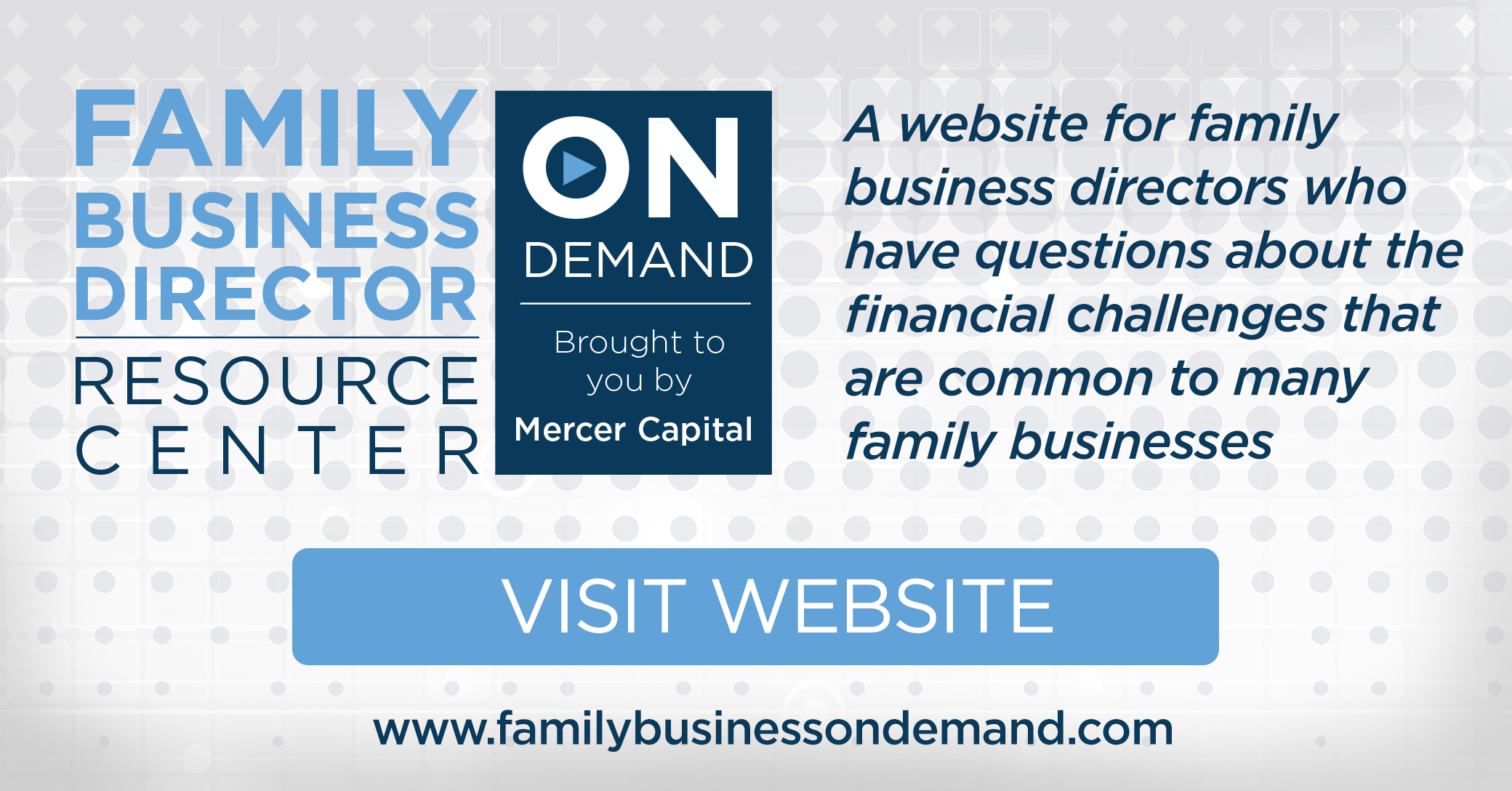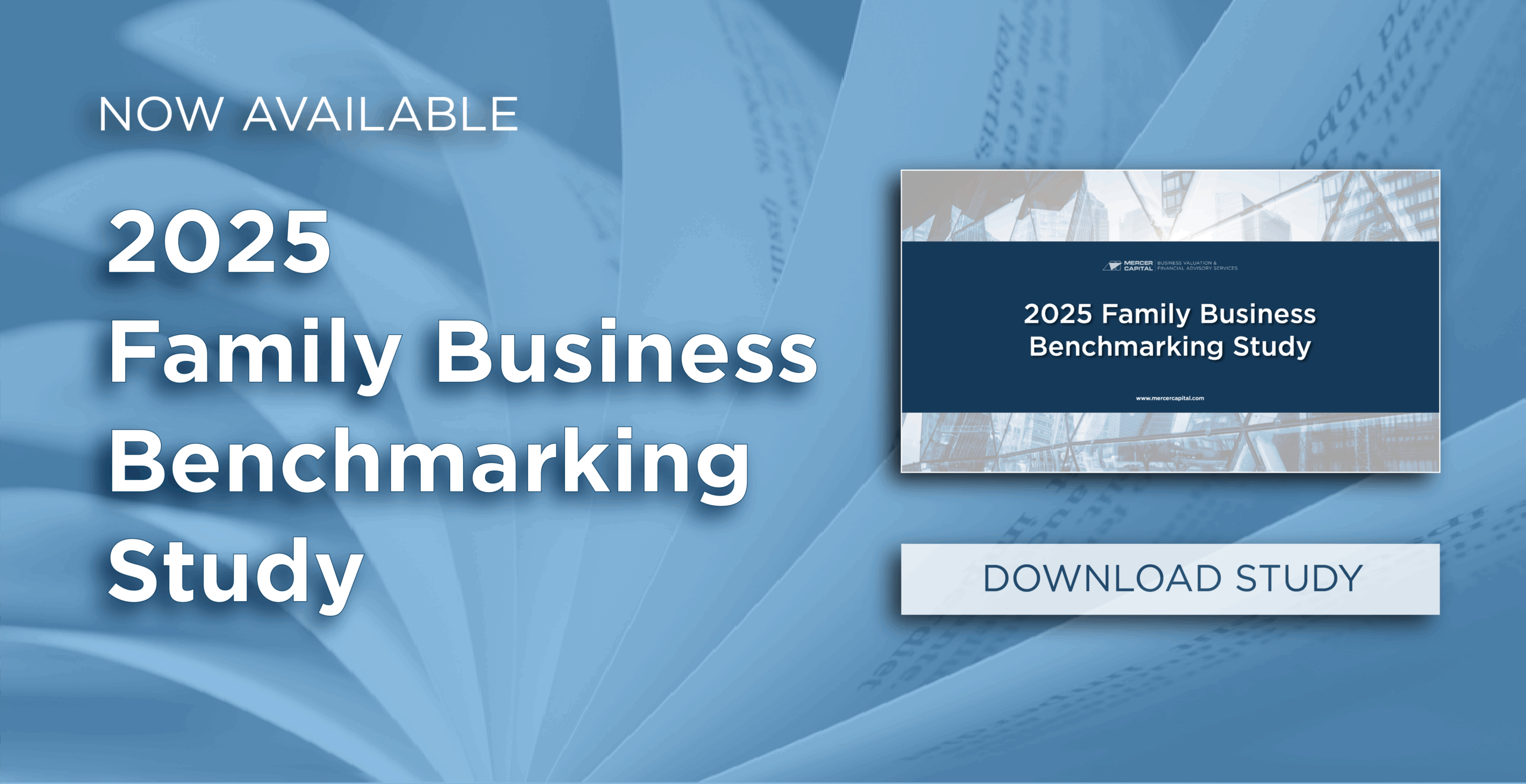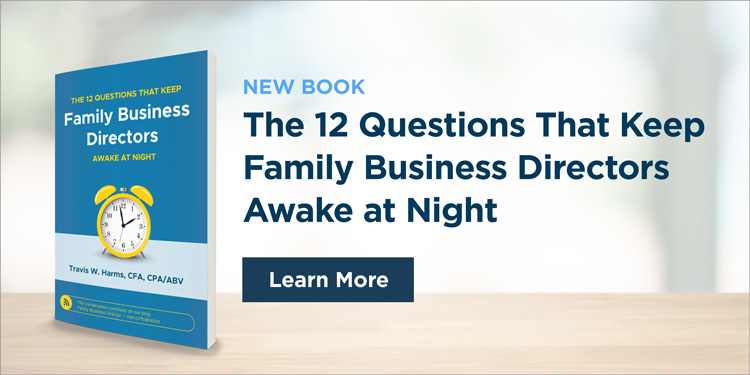The intersection of family and business generates a unique set of questions for family business directors. We’ve culled through our years of experience working with family businesses of every shape and size to identify the questions that are most likely to trigger sleepless nights for directors. Excerpted from our recent book, The 12 Questions That Keep Family Business Directors Awake at Night, we address this week the question, “Does our dividend policy fit?”
Blog
Family Business Director
Corporate Finance & Planning Insights for Multi-Generational Family Businesses
Why Do Family Businesses Tend to Borrow Less Money?
As recounted in the Harvard Business Review article entitled “What You Can Learn from Family Business,” an academic study of family-controlled and non-family public companies found that debt constituted 37% of the capital of family-run businesses, compared 47% for the non-family companies. This finding is generally consistent with our experience working with family businesses of all sizes. In this post, we consider why family-run businesses might be a bit more debt-shy than their non-family peers.
Top Ten Questions Not to Ask at Thanksgiving Dinner
For most of us, Thanksgiving is a time to disregard normal dietary restraint in the company of extended family members that one rarely sees. For some enterprising families, however, Thanksgiving quickly devolves from a Rockwellian family gathering to a Costanza-style airing of grievances. So, in the holiday spirit, we offer this list of the top ten questions not to ask at Thanksgiving dinner. If you have trouble distinguishing between the board room and the dining room, this list is for you.
Family Businesses and Scarce Capital
Family Business Director was recently whiling away the hours scrolling through the archives of the Harvard Business Review when an article caught our eye. “What You Can Learn from Family Business” was written by Nicolas Kachaner, George Stalk, Jr. and Alain Bloch, and appeared in the November 2012 issue. The authors describe an empirical study they undertook to discern the ways family businesses are different from their non-family owned peers. In a series of posts over the next several weeks, we’ll take a closer look at some of the attributes identified by the authors, particularly from the perspective of privately-held family businesses. This week, we’ll consider how family businesses make capital expenditure decisions.
Build or Buy?
Is Your Family Business a Builder or a Buyer?
How should you and your fellow family business directors decide whether to build or buy? What will be the most effective form of capital investment for your family business? Since software developers think more about the build vs. buy decision than most of us do, we thought it would be interesting to apply a software-related decision framework to family business investment decisions. For purposes of this blog post, we follow the six step decision framework advocated by Justin Baker.
What Time is it for Your Family Business?
It is harvest time in rural America. Farmers are working long hours gathering the crops that have been planted, fertilized, watered and worried over since springtime. While the cycle of planting and harvesting is an annual one on the farm, for family businesses, the cycle can span decades or even generations. There are many different ways to classify family businesses, but one simple distinction that we find ourselves coming back to often is that between planters and harvesters. So what time is it for your family business? Is it planting season or harvesting season?
Lessons for the Long Haul
While public companies are planning for the next quarter, successful family businesses are planning for the next decade. While private equity firms anticipate exit, successful family businesses anticipate transitioning to the leadership of the next generation. A recent profile in the New York Times of Rumiano Cheese provides a great example of how family businesses persist and endure over generations. Rumiano Cheese is celebrating its centenary this year, and the company’s story provides some great reminders for all family businesses that are in it for the long haul.
Questioning Your Family Business Balance Sheet
If the income statement is a movie that records how your family business performed during a particular period, the balance sheet is a snapshot that records what your family business looked like at a particular date. The balance sheet answers two core questions: “What are the assets our family business owns?” and “How has our family business paid for those assets?”
We’ll flesh out the first question in this week’s post, and turn our attention to the second question in a subsequent post.
5 Reasons to Conduct a Shareholder Survey
An engaged and informed shareholder base is essential for the long-term health and success of any private company, and a periodic shareholder survey is a great tool for achieving that result. This week’s post includes a list of five good reasons for conducting a survey of your shareholders.
Four Questions to Ask About Debt in Your Family Business
What’s the right capital structure for your family business? We find that the best answer to that question can be found after asking these four questions about the use of debt in your family business.













